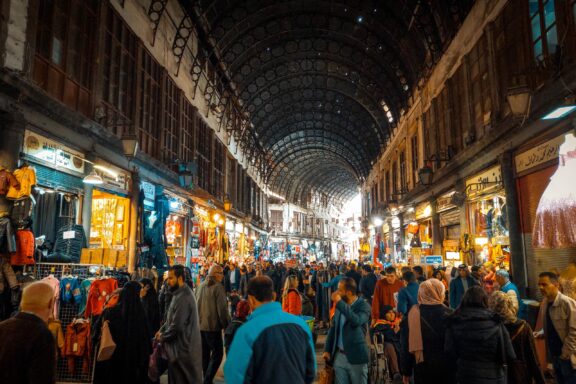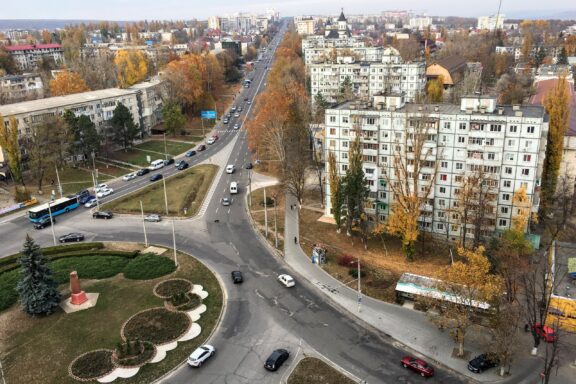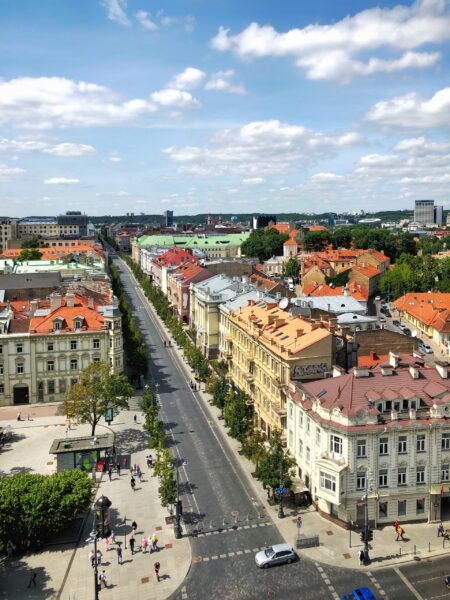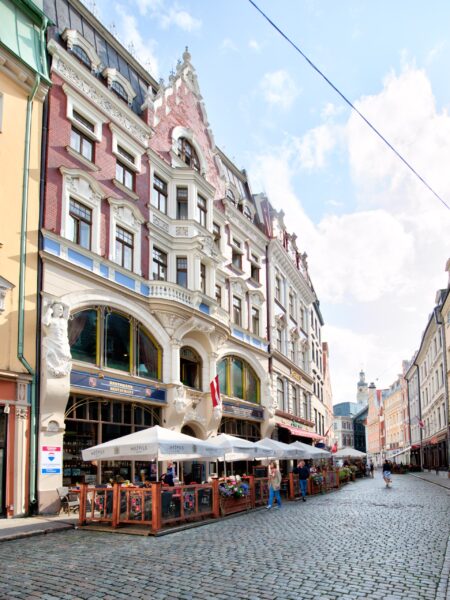There are many countries with declining populations in the world, and they can be found on almost any continent. A variety of causes are responsible for these declines, but low fertility rates and high levels of migration are almost always the two main causes.
In this post, we’ll look at the 20 countries with the lowest average population growth from 2011 — 2021, learning about each one along the way.
The table below displays data gathered by the World Bank on the top 20 countries with declining populations:
| Country Name | 2011-21 Avg. Population Growth | Population in 2021 | Population decline since 2011 |
|---|---|---|---|
| Marshall Islands | -2.18% | 42,050 | -10,921 |
| Bosnia and Herzegovina | -1.39% | 3,270,943 | -472,199 |
| Puerto Rico | -1.19% | 3,263,584 | -415,148 |
| Latvia | -0.97% | 1,884,490 | -175,219 |
| Lithuania | -0.91% | 2,800,839 | -227,276 |
| Croatia | -0.88% | 3,899,000 | -381,622 |
| Moldova | -0.82% | 2,615,199 | -245,500 |
| Bulgaria | -0.66% | 6,877,743 | -470,585 |
| Serbia | -0.59% | 6,834,326 | -399,773 |
| Romania | -0.52% | 19,119,880 | -1,027,648 |
| Armenia | -0.49% | 2,790,974 | -138,002 |
| St. Vincent and the Grenadines | -0.42% | 104,332 | -4,371 |
| Syrian Arab Republic | -0.42% | 21,324,367 | -1,406,366 |
| Ukraine | -0.42% | 43,792,855 | -1,913,231 |
| Greece | -0.4% | 10,641,221 | -463,678 |
| Albania | -0.32 | 2,811,666 | -93,529 |
| Hungary | -0.27 | 9,709,891 | -261,836 |
| Palau | -0.26 | 18,024 | -216 |
| Portugal | -0.22 | 10,325,147 | -232,413 |
| Georgia | -0.19 | 3,708,610 | -47,831 |
Most of the countries with significant drops in populations are in Europe:
Why are populations declining in Europe?
The population of the European Union (EU) recently dropped for the second year in a row, continuing a trend of slowed population growth in recent decades. As is the case in many developed countries around the world, fertility rates in Europe have dropped, and people are living longer lives. This leads to an older population and not enough births to replace deaths.
One of the impacts of the COVID-19 pandemic in Europe was that death rates grew in 2020 and 2021, and fertility rates didn’t increase to make up for this difference.
Another reason populations are decreasing in many European countries is emigration. This isn’t the case in countries like Germany and Switzerland, which are receiving many immigrants, but it is the reason countries like Croatia, Latvia, and Greece are losing residents.
Population decline in the Marshall Islands, Puerto Rico, and Palau
Island nations, especially those whose citizens have the ability to freely travel to larger nations, have been experiencing dramatic population decline in recent years. Of the reasons this is happening, out-migration is one of the root causes.
Fertility rates have dropped in most of these nations, but the reason populations are decreasing so rapidly is that people are leaving the islands to seek better economic opportunities elsewhere. This is especially true with younger people and those able to perform skilled work.
Worldwide Population Decline
The worldwide population has recently reached eight billion, but its growth rate has slowed noticeably in the past decades. One of the main reasons for this is dramatically lower fertility rates. With fertility rates dropping from 5.3 per woman in 1963 to 2.3 in 2020, the world’s population has begun to increase much more slowly.
Lower fertility rates in some areas can spell difficulties related to population decline, but one of the main reasons we’re seeing lower rates on a global scale is that medical care for children and mothers has improved in many places in the world. Contraception is also more widely available, and women are more educated and have more options in many regions.
One of the difficulties associated with worldwide population decline will be dealing with aging populations around the globe. Taking care of older populations is more difficult with fewer people, and it’s something many regions will have to learn to cope with.
20. Georgia

2011-21 Average Population Growth: -0.19%
2021 Population: 3,708,610
Georgia’s population has experienced negative average growth over the past decade, and it can be attributed to a variety of factors. One of these is the difference between childbirths and deaths in the country. Especially in 2020 and 2021, deaths outweighed childbirths in Georgia, which contributed significantly to the country’s population decline.
Another reason Georgia’s population has gotten smaller each year on average has to do with migration. The country has experienced negative net migration numbers for many years, starting with its departure from the Soviet Union in the early ‘90s, and continuing with residents seeking better economic opportunities abroad in more recent years.
19. Portugal

2011-21 Average Population Growth: -0.22%
2021 Population: 10,325,147
Despite experiencing a positive net migration growth over the past decade, Portugal’s population has declined by around 2% — its 2021 population was similar to figures for 2001. It is the first decade since 1960-70 that the country has experienced a decline.
Low birth rates and an aging population in Portugal have contributed to a negative natural balance in the country since 2009. Although there has been a positive net migration in Portugal in the last few years, it hasn’t been enough to mitigate the natural population decline. There has also been a trend of populations decreasing in rural areas and increasing along the coast or in larger cities.
18. Palau

2011-21 Average Population Growth: -0.26%
2021 Population: 18,024
Palau’s location in the region of Micronesia is likely a contributor to the population decline it has experienced over the past decade and beyond. As we explored earlier in this post, there is a trend among some isolated island nations of negative net migration due to residents seeking economic opportunity or fleeing changing climate conditions.
In the case of Palau, it has seen lower birth rates in recent history, which has coupled with an increase in deaths throughout the country. This has combined with negative migration numbers to continue a trend of decline that can be traced back to the mid-’90s.
17. Hungary

2011-21 Average Population Growth: -0.27%
2021 Population: 9,709,891
Hungary has seen a steady negative population growth for the past ten years, but the decline in 2021 was the most dramatic in nearly 150 years. The significant decrease in population has been largely attributed to an increase in deaths due to the effects of the COVID-19 pandemic, which far outweighed a slight increase in birth rates.
The central European country has been on a mission to mitigate population losses by increasing the number of children born each year. It’s attempted this through policies encouraging families to have children and has seen modest success so far.
16. Albania

2011-21 Average Population Growth: -0.32%
2021 Population: 2,811,666
The population decline in Albania, located in the Balkans, started in 1990 due to mass emigration following the end of the Enver Hoxha dictatorship. This was the first time in four decades that residents were allowed to freely leave the country, and much of the population was ready to take advantage of this.
Relatively high levels of emigration from Albania have continued in the last decade, birth rates have decreased, and an aging population means more deaths. All of these factors together contribute to the country’s population decrease. There are currently more Albanians living outside the country than within.
15. Greece

2011-21 Average Population Growth: -0.4%
2021 Population: 2,811,666
In Greece, the population has been steadily declining since 2011. An average growth rate of -0.4% per year over the past decade has meant a decrease in nearly 4% of the population. Of the factors at play is the fact that Greece has one of the fastest-aging populations in the EU. A larger older population means fewer people having children and higher death rates.
Migration is another factor that’s responsible for the decrease in Greece’s population. People have left the country in large numbers seeking better economic opportunities since the 1980s, and this trend continues.
14. Ukraine

2011-21 Average Population Growth: -0.42%
2021 Population: 43,792,855
There are three countries tied with an average population growth of -0.42%, and Ukraine is the largest by far. Ukraine’s pattern of population decline isn’t new, but it has recently become much worse. Exacerbating a decline that began following the country’s independence in 1991, the current Russian invasion of Ukraine is having a major effect.
In the decade that led up to the war, the major reason for a declining population was a negative migration trend related to residents seeking economic opportunities outside the country. This is an issue that plagues many countries in Eastern Europe.
13. Syrian Arab Republic

2011-21 Average Population Growth: -0.42%
2021 Population: 21,324,367
The past decade has seen incredible numbers of Syrians leave the country, mostly due to the ongoing armed conflicts happening within the country. Millions of refugees have left the country to seek safety and economic stability, and this has dramatically shrunk the country’s population.
Just over ten years ago, Syria was experiencing such swift population growth that it was struggling to cope with the demand. This trend has been totally altered with the start of the Syrian Civil War in 2011, and it is speculated that people will continue to leave Syria’s location in the Middle East in search of stability elsewhere.
12. St. Vincent and the Grenadines

2011-21 Average Population Growth: -0.42%
2021 Population: 104,332
From 2011 to 2021, St. Vincent and the Grenadines experienced a drop in population of 4,371 people, making for a 2021 population of 104,332 and an average growth rate of -0.42% over ten years, tied with Ukraine and the Syrian Arab Republic.
Unlike many countries on this list, St. Vincent and the Grenadines is not experiencing low birth rates and high numbers of deaths. On the contrary, natural growth has remained positive in the country over many years. Instead, it is a negative net migration rate that is driving population decline here.
11. Armenia

2011-21 Average Population Growth: -0.49%
2021 Population: 2,790,974
Armenia makes number 11 on the list of countries with declining populations. As is the case with other former Soviet nations, the population in Armenia began to decline significantly after it gained independence in 1991, and the trend hasn’t reversed.
Today, the main causes of dwindling population numbers in Armenia are a low birth rate and high emigration rates. The government has attempted to provide better financial incentives for families to have more children in recent years to mitigate the decline, and it is focused on easing societal and political tensions to stem the flow of emigration.
10. Romania

2011-21 Average Population Growth: -0.52%
2021 Population: 19,119,880
Playing out a scene that has become common across Eastern Europe, more people are emigrating from Romania than are arriving to settle in the country. This negative migration flow has contributed to the declining population in Romania and could put a strain on its economy.
Low birth rates and an aging population are other contributors to the population decline seen from 2011 to 2021. The country experienced the sharpest population decline of any in the EU in 2020. This is a trend that speculators warn could continue in Romania and nearby countries over the coming decades.
9. Serbia

2011-21 Average Population Growth: -0.59%
2021 Population: 6,834,326
Serbia’s population decline began many decades ago, though official figures may have masked the decline by counting Serbians that were living outside of the country. The country’s census now only includes residents living in the country, and it’s clear that the numbers are growing smaller each year.
High emigration numbers and low birth rates are the primary culprits of the dwindling population. If the current trend continues, Serbia’s population will be 25% lower in 2050 than it was in 1990. Ghost towns across the country are just one of the symptoms of Serbia’s extreme population decline.
8. Bulgaria

2011-21 Average Population Growth: -0.66%
2021 Population: 6,877,743
Bulgaria has the lowest per-capita income of any country in the EU, and this likely plays a major role in the decline its population has seen over the past decade. As a member of the EU, Bulgarian citizens have the right to seek work and live in other member states, and the economic opportunities abroad are generally much more attractive than those at home.
Low birth rates are also contributing to the negative population growth rate in Bulgaria and across the region, but they certainly don’t tell the whole story. Birth rates aren’t significantly lower in Bulgaria than in its neighboring countries, but high emigration levels make it a leader in population decline.
7. Moldova

2011-21 Average Population Growth: -0.82%
2021 Population: 2,615,199
If you can point to Moldova on a map, you might also know that it was once a part of the Soviet Union, a fact that bears on the trajectory of its population growth rate. Since Moldova gained independence in 1991, its population has dropped by nearly 1.5 million people. The main cause of this drop? Emigration.
Like many countries in the area, more people have been dying each year than are being born, but negative net migration numbers are far more impactful. A shortage of labor and skilled professionals is causing some to label the situation an existential crisis for Moldova.
6. Croatia

2011-21 Average Population Growth: -0.88%
2021 Population: 3,899,000
To understand the current social, political, and economic situation of Croatia, it’s necessary to consider the country’s history as a Yugoslav nation and its subsequent years of civil war in the country from 1991 — 1995. The country’s economy was devastated during this time period and hasn’t quite recovered.
Even after the country’s accession to the EU, the economy has continued to lag behind, and this has incentivized many Croatians to seek work and more prosperous lives abroad. Croatians also aren’t having as many children as is necessary to keep up with death rates in the country, and an aging population exacerbates the problem.
5. Lithuania

2011-21 Average Population Growth: -0.91%
2021 Population: 2,800,839
Lithuania has made the list of countries with declining populations for many years after it successfully gained independence from the Soviet Union in 1990, but the trend may be changing. Thanks to the increasing attractiveness of economic opportunities in the country, net migration was positive in 2021 for the first time in three decades.
Although emigration has decreased and has, at least temporarily, slowed the decline of Lithuania’s population, birth rates are nowhere near where they would need to be to keep up with the country’s death rate.
4. Latvia

2011-21 Average Population Growth: -0.97%
2021 Population: 1,884,490
Fluctuations in Latvia’s population are nothing new — World War II and its time as a Soviet nation both had dramatic impacts on the number of people in the country — but the current population decline has many people worried about Latvia’s future.
Consistent with the trend of worldwide population decline, birth rates in Latvia aren’t keeping up with death rates. There simply aren’t enough new births to keep up with the deaths in the country. This problem is compounded by the fact that Latvians have been emigrating from the country in big numbers. Economic opportunities in other EU countries are very often more attempting than domestic options.
3. Puerto Rico

2011-21 Average Population Growth: -1.19%
2021 Population: 3,263,584
Puerto Rico is an unincorporated territory of the US, and its story of population decline is one shared by other US territories. Put simply, there are better economic opportunities elsewhere. In many countries around the world, populations are moving away from rural areas in search of higher-paying jobs. A similar phenomenon is happening in Puerto Rico.
Residents of Puerto Rico are free to live and work on the US mainland, and that’s just what many are doing. The natural population growth in Puerto Rico is another factor causing numbers to drop. The World Bank recorded a birth rate of just 0.9 per woman in 2020.
2. Bosnia and Herzegovina

2011-21 Average Population Growth: -1.39%
2021 Population: 3,270,943
Bosnia is yet another Balkan county with a population that is in rapid decline. It lost over 3.2 million people in the ten years from 2011 to 2021, giving it an average growth rate of -1.39% for that time period. The cause of this drop is both a negative natural growth rate and mass emigration.
Although cities like Sarajevo, the capital of Bosnia and Herzegovina, may be full of tourists and the Bosnian diaspora during the summer months, they quickly empty out during the off season. Bosnians are choosing to live outside of the country in search of better work opportunities, and it’s the main cause of the country’s major population drop.
1. Marshall Islands

2011-21 Average Population Growth: -2.18%
2021 Population: 42,050
The country with the most dramatic population decline from 2011 — 2021 is the Marshall Islands. With an average growth rate below -2% per year, the country has lost around 20% of its population. The major reasons for this are emigration to countries like the US, to which islanders can travel visa-free.
Economic pressure due to the remote location of the Marshall Islands is likely a key reason people are leaving the country. Almost half of the households in the country say they worry about having enough food. Every island and atoll in the country saw a population drop in this ten-year period.